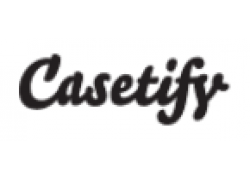When bonds are issued at a premium, the cash received exceeds the face value, leading to a premium on bonds payable. The straight-line method amortizes this premium evenly over the bond’s life, impacting interest expense calculations. Conversely, bonds issued at a discount result in cash received being less than the face value, requiring similar amortization techniques. Key formulas include cash interest calculations and amortization rates, ensuring accurate financial reporting and adherence to accounting standards. When a corporation is preparing a bond to be issued/sold to investors, it may have to anticipate the interest rate to appear on the face of the bond and in its legal contract.
When bonds are sold at a discount or a premium, the interest rate is adjusted from the face rate to an effective rate that is close to the market rate when the bonds were issued. Therefore, bond discounts or premiums have the effect of increasing or decreasing the interest expense on the bonds over their life. Under these conditions,it is necessary to amortize the discount or premium over the life of the bonds by using either the straight-line method or the effective interest method. Rather than assigning an equal amount of amortization per period, the effective-interest method calculates different amounts to transfer to interest expense each period. Although the company will make regular, equal interest payments each period, it will record different amounts in the interest expense category under the effective-interest method. This method ensures that the discount amortization reflects the market conditions at the time of issuance.
Each period the interest expense (4,249) is the interest paid to the bondholders based on the par value of the bond at the bond rate (4,800) less the premium amortized (551). If the issuer lets the buyer purchase the bond for less than face value, the issuer can document the bond discount like an asset for the entirety of the bond’s life. In this case, the bond holder essentially assumes the same role as a bank lending a 30-year mortgage to a home buyer. Much like the bank receiving regular payments over the life of the mortgage loan, the bond holder receives regular payments of both principal and interest until the bond reaches maturity. Amortized bonds differ from other types of loans and helping clients better understand bond amortization can further strengthen your role as a trusted advisor. Amortization schedules, bonds payable, bond calculation methods, and more.
In our previous blog post, we discussed the Straight-Line Method for Unamortized Bond Discount, which provides a simplified approach to calculating the discount on bonds. Now, let’s delve deeper into this topic and explore some practical examples that will help solidify our understanding of the concept. As we amortize the premium or discount, the bond’s book value reduces to its par amount by the maturity date.
Let’s assume that the corporation prepares a $100,000 bond with an interest rate of 9%. Just prior to issuing the bond, a financial crisis occurs and the market interest rate for this type of bond increases to 10%. If the corporation goes forward and sells its 9% bond in the 10% market, it will receive less than $100,000. When a bond is sold for less than its face amount, it is said to have been sold at a discount.
Annual Straight Line vs. Effective Interest Amortization
So let’s start with the premium bonds and let’s discuss this straight line amortization all in detail a little more. So like our similar example before, on straight line method of bond discount January 1, 2018, ABC Company issues $50,000 of 9% bonds maturing in 5 years. So we know this is a premium, first, because the stated rate on the bonds is greater than the market rate.
- Bond issuers may use sinking funds to buy back issued bonds or parts of bonds prior to the maturity date of the bond.
- The discount will increase bond interest expense when we record the semiannual interest payment.
- If the corporation goes forward and sells its 9% bond in the 10% market, it will receive less than $100,000.
- In this article, we’ll explore what bond amortization means, how to calculate it, and more.
- Notice that under both methods of amortization, the book value at the time the bonds were issued ($96,149) moves toward the bond’s maturity value of $100,000.
Discount on Bonds Payable with Straight-Line Amortization
So our bonds are only paying 9% when the market is paying 10%, they’re going to sell at a discount, and we can tell it’s a discount because they’re issued at 94%, right? So the cash we receive is going to be equal to the 50,000 times 94% which is 0.94. So that’s the amount of cash we’re going to receive, but that’s not the amount we pay back when these mature, right? So we’re going to debit cash here because we received cash of 47,000 and we’re going to credit bonds payable.
This method is often seen as more practical for simplicity in accounting but may not accurately reflect market conditions if the bond is called before maturity. To calculate the present value of the semiannual interest payments of $4,500 each, you need to discount the interest payments by the market interest rate for a six-month period. This can be done with computer software, a financial calculator, or a present value of an ordinary annuity (PVOA) table. Under this situation, the company allocates the interest on the bond issued by it equally over the asset’s life. This interest arises when the company issues the bonds at a discount, but the interest is payable on the face value. So, the company must amortize the bond discount given, i.e., the difference between the face value and the value received over the remaining period of maturity of the bond.
Discount Bond Amortization
Being aware of these potential drawbacks allows for more informed decision-making when choosing an amortization method for unamortized bond discounts. The effective interest method, constant yield method, and market interest rate method all offer their own advantages and considerations. Investors and accountants should carefully evaluate these techniques based on the specific characteristics of the bond and the desired level of accuracy in the amortization process. Company XYZ issues a 10-year bond with a face value of $1,000 and a stated interest rate of 5%.
Bond Principal Payment
- Understanding bond discount and its accounting treatment is vital for accurately reflecting the financial position and performance of an entity issuing bonds.
- Let’s consider an example to illustrate the straight-line method for bond discount amortization.
- Notice that under both methods of amortization, the book value at the time the bonds were issued ($104,100) moves toward the bond’s maturity value of $100,000.
- Since this 9% bond will be sold when the market interest rate is 8%, the corporation will receive more than the bond’s face value.
When a bond is issued at a value above or below its par value, a premium or discount is created. In order to account for the bond properly, this premium or discount needs to be amortized over the lifetime of the bond. One of the main financial statements (along with the statement of comprehensive income, balance sheet, statement of cash flows, and statement of stockholders’ equity).
Amortizing Bond Premium with the Effective Interest Rate Method
Notice in this case, since we have a discount, we have a debit here and it’s lowering the value of our liability, where with the premium it was increasing the value of our liability. The cash went up by 47,000, but notice what happens with our liabilities. Well, the discount is going to lower this value by that 3,000 leaving us with 47,000 in our liabilities there. Understanding bond amortization is crucial in accounting, particularly when dealing with discounts and premiums.
Over the life of the bonds the bond issue costs are amortized to interest expense. Next, let’s assume that after the bond had been sold to investors, the market interest rate increased to 10%. The issuing corporation is required to pay only $4,500 of interest every six months as promised in its bond agreement ($100,000 x 9% x 6/12) and the bondholder is required to accept $4,500 every six months.
Under the straight-line method the interest expense remains at a constant annual amount even though the book value of the bond is decreasing. The accounting profession prefers the effective interest rate method, but allows the straight-line method when the amount of bond premium is not significant. The difference between the present value of $67,600 and the single future principal payment of $100,000 is $32,400. This $32,400 return on an investment of $67,600 gives the investor an 8% annual return compounded semiannually. The remaining columns of the PV of 1 Table are headed by interest rates. The interest rate represents the market interest rate for the period of time represented by “n“.
The income statement is also referred to as the profit and loss statement, P&L, statement of income, and the statement of operations. The income statement reports the revenues, gains, expenses, losses, net income and other totals for the period of time shown in the heading of the statement. If a company’s stock is publicly traded, earnings per share must appear on the face of the income statement. The accounting method under which revenues are recognized on the income statement when they are earned (rather than when the cash is received).
Explanation of Amortization of Bond Discounts
Let’s assume that just prior to selling the bond on January 1, the market interest rate for this bond drops to 8%. Rather than changing the bond’s stated interest rate to 8%, the corporation proceeds to issue the 9% bond on January 1, 2024. Since this 9% bond will be sold when the market interest rate is 8%, the corporation will receive more than the bond’s face value. First, let’s assume that a corporation issued a 9% $100,000 bond when the market interest rate was also 9% and therefore the bond sold for its face value of $100,000.







No Comments
Leave Comment